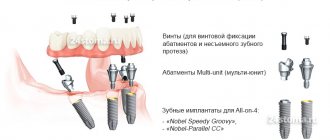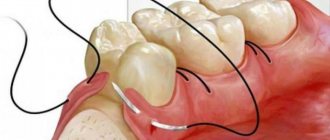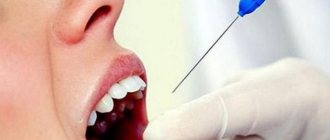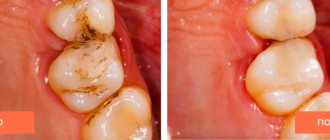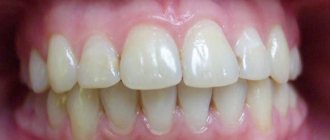Types of chancre
Chancre is an ulceration that occurs 3-90 (on average 21) days from the moment of infection with syphilis, more often in the area of penetration of the pathogen into the patient’s body.
First, a pink spot (inflammation) forms on the skin, then a dense nodule appears in this place, after 7-10 days it becomes necrotic and turns into an ulcer or erosion. If the resulting chancre is not accompanied by itching or pain, then it is called syphiloma. Syphiloma has a regular round or oval shape and clear boundaries that protrude above the skin. The edges are dense, roll-shaped. The bottom of the syphiloma is red, less often – meat-colored, maybe red-brown, and the chancre itself looks varnished, due to the characteristics of the wound.
The size of syphiloma varies from 5 to 30 mm, but there are ulcers of larger or smaller diameter. The main symptom of chancre is a cartilaginous compaction at the base of the ulcer, which can be felt upon palpation. When pressed, the chancre is painless. The skin around the ulcer is clean, without signs of inflammation.
Chancre is formed due to the penetration of Treponema pallidum (spirochete) into the body. For reproduction, the temperature of the human body is suitable for it and after entering the body it actively forms syphilomas. The chancre themselves can be of different types, shapes and sizes.
Classification
By quantity
Single - chancre in the form of a separate neoplasm, or multiple, which looks like several ulcerations.
By origin
Twin chancres occur during simultaneous infection - when the pathogen enters the patient’s body not in one, but in several “places”. That is, instead of one chancre, two or more can be found.
Chancres formed as a result of infection at different times. They appear one after another, in approximately the same place.
The so-called “kissing” chancre, which occurs on contacting surfaces.
Concomitant diseases can contribute to the formation of multiple syphilomas:
- scabies
- acne
- skin injuries
By depth of penetration into tissue
Syphilomas have different depths of tissue damage.
Ulcerative lesions affect the deep layers of the skin. They can pass through the dermis - right down to the subcutaneous tissue. I have a rough bottom covered with purulent plaque. Erosion is located closer to the surface. The bottom is smooth, shiny, and shaped like a saucer.
To size
In addition to standard sizes from 5 to 10 mm, there are giant and dwarf chancres.
Giant chancres are extremely rare and can reach up to 20 cm in diameter. They are localized mainly in areas of accumulation of fatty tissue: on the abdomen, thighs, and pubis. Syphilomas are called dwarf and are the size of a poppy seed - 1-2 mm; they can only be seen through a magnifying glass. They are rare.
By location
Chancre can be located on different parts of the body:
- genital syphilomas are located on the genitals
- extragenital - on any other parts of the body outside the genitals (Fig. 1)
- bipolar syphilomas occur simultaneously both on the genitals and outside the perineum.
Figure 1. Chancre on the index finger of the left hand and in the area of the inner corner of the left eye. Source: CC0 Public Domain
By shape
In addition to the classic round shape, chancre can have a different appearance.
Slit-shaped syphilomas look like cracks. They can form in the corners of the mouth, on the tongue, near the anus. They are rare. Located in the corners of the mouth, they can be perceived by the owner as non-dangerous “jams”.
Cortical chancre is not like ordinary syphilomas; it is not concave in shape and is covered with a crust. It usually forms on ulcers that are located in places where their contents dry out easily: the surface of the nose, face, corners of the mouth.
Diphtheritic chancre is covered with an ash-gray film, similar to diphtheria. Happens quite often. It can be localized in any area.
The burn chancre quickly increases in diameter, while its borders lose their regular shape and clear outline, and the bottom changes from smooth to red-grained (Fig. 2). Typically, primary syphilomas do not tend to grow. This is an exception.
Figure 2. Burn syphiloma. Source: CC0 Public DomainCaption
Erosive chancre includes many erosions; ulcers can merge. Formed exclusively on the mucous membranes of the genitals.
Chancroid herpetiformis is named for its resemblance to genital herpes. This is an erosive formation, in the field of which there are many small ulcers with clearly defined edges. Similar to Folman's balanitis, but in this case the ulcers do not merge.
Localization
Since syphilis is transmitted primarily through sexual contact, chancroid is most often localized on the genitals. However, clinical practice shows that syphilomas are almost as often found in the mouth and anus.
This means that chancre can appear anywhere, the place of its localization can be:
- penis and scrotum
- labia and clitoris
- posterior commissure and anal area
- pubis
- oral cavity: lips, gums, tongue and throat
- inner thighs
- chest and stomach
- face
- rarely - eyelids, conjunctiva of the eyes
Chancre can be located inside the genital organs, for example, on the walls of the vagina or cervix, then syphiloma is difficult to detect.
Acne prognosis for syphilis and complications
Acne with syphilis itself will sooner or later go away on its own.
For some time the disease occurs without symptoms.
But this does not mean that the person is cured.
The rashes often recur.
And in the absence of timely treatment, the disease can progress to the tertiary stage.
She is very heavy.
Accompanied by damage to the central nervous system and internal organs.
Foci of infection can occur in almost any part of the body.
Most often affected:
- bones
- sense organs
- joints
- muscles
Gummas are formed.
Entire sections of tissue die.
They can lead to disability of the patient and often disfigure him.
They often cause organ loss.
For example, the eyes, nose or penis.
In the most unfavorable cases, syphilis ends in death.
Stages of development
Incubation period
The incubation period - from the moment of infection to the appearance of symptoms of the disease - lasts on average from 2 weeks to 2 months, although observations of longer duration are known. It all depends on the state of immunity at the time of infection. Long asymptomatic periods usually occur in people who were taking antibacterial drugs to treat other diseases at the time of infection.
During the incubation period, Treponema pallidum multiplies in the lymphatic system until it reaches a maximum concentration. They then enter the bloodstream and spread throughout the body. At this time, the disease does not manifest itself in any way and is not detected in blood tests, but the person is already infected. Without realizing it, he or she is putting the sexual partner at risk if they have unprotected sex.
Important! Treponema pallidum can reproduce in a small temperature range, around 37 °C. Therefore, to treat syphilis, the method of pyrotherapy is practiced - increasing body temperature. The patient is given drugs that increase body temperature, as a result of which treponema is deprived of the opportunity to reproduce. This method is considered the most effective for nonspecific treatment of syphilis.
Chancre formation
Figure 3. Development of syphiloma.
Source: CC0 Public Domain Once in soft tissue, treponema begins to actively multiply. During this period, a slight increase in temperature and an increase in nearby lymph nodes, which can be palpated, are possible. Inflammation develops at the site of infection - this is how immune cells try to destroy the enemy.
From the outside, the inflammation site looks like a bright pink patch of skin. Then a characteristic dense nodule forms on the skin - the rudiment of the future chancre (Fig. 3). It enlarges, thickens and after a week and a half ulcerates.
If the ulcer is covered with a crust, then the chancre is also called cortical. If you press on it, a yellowish liquid will come out, in which there is a high concentration of treponemes. This type of syphiloma is called “crying chancroid.”
Discharge from chancre is contagious, and contact with it can transmit infection. This danger is especially high when chancre is located in the mouth - there is a high risk of infecting a partner with syphilis even through a kiss.
The formation of chancre indicates the end of the incubation period and the onset of the primary stage of syphilis. Chancre does not bother the wearer with either itching or pain, which is bad - a person may simply not pay attention to it and waste time.
The primary stage is the most favorable for the destruction of the pathogen. During this period, a complete and rapid recovery is possible with timely administration of antibacterial therapy. In the future, coping with the disease will become more and more difficult.
Healing chancre
An ulcerated chancre lasts 6-7 weeks, then healing begins. Erosion can pass without a trace, but sometimes it leaves a dark pigment spot. When the ulcer heals, a scar remains. A few days before the chancre disappears, profuse itchy rashes may appear on the body.
At this stage, syphilis enters the secondary stage.
Important! Healing of chancre is often mistaken for recovery. This is wrong. In fact, the disease continues to develop, spreading throughout the body.
What is the difference between soft chancre and hard chancre?
There is a chancroid similar to hard - soft chancre (chancroid). It, like syphilis, is sexually transmitted, but occurs due to infection not by Treponema pallidum, but by bacteria of the genus Haemophilus influenzae.
Chancroid differs from hard chancroid in the following ways:
- there is no hard cartilaginous base (that’s why chancroid is called “soft”)
- the edges of the ulcer are not hard, but soft, spreading
- characterized by copious discharge of pus
- painful
- color hot pink, red
Development of primary syphilis on the lips
At the beginning of the disease, blisters filled with pus appear; they are the source of infection. The patient must be urgently sent to the hospital, where a course of therapy will be prescribed. After the bubbles appear, men's body temperature rises. If the pathogen is not killed in a timely manner, syphilis will begin to spread to the throat and upper respiratory tract.
Attention! You should not wait for complications; it is better to treat the infection at the first stage.
If the disease starts, gummas and tubercles will begin to form instead of papules and roseolas. As a result, everything will end in an internal inflammatory process. The dark red bumps gradually increase in size, then begin to collapse, followed by ulcers. The affected area takes too long to heal, then scars appear.
In men, syphilis on the lips is accompanied by severe inflammation and tissue swelling. Subsequently, everything ends in necrosis and phimosis.
It is almost impossible to get rid of long-healing purulent ulcers. In addition to the fact that the mucous membrane of the lips is severely affected, deep tissue damage can be observed. It is dangerous when treponema begins to become active, enters the oral cavity, and gradually affects the entire body and genitals. Syphilis on the lips can be seen in the photo, which spoils the appearance; all damage after a while becomes the cause of various deformities.
Diagnostics
Several basic methods are used to detect syphilis:
- Detection of treponema pallidum using a microscope in a scraping taken from a chancre.
- The serological method (Wassermann reaction) - when specific proteins that are produced by the immune system in response to the appearance of treponemes in the body are determined, is not effective for primary syphilis.
- The microprecipitation reaction is a rapid diagnosis, also based on the body’s production of antibodies.
- Specific tests RIF, RIT, RPGA, etc. – difficult to set up, time-consuming and expensive. Used to identify latent syphilis, in complex atypical cases, in differential diagnosis and for the diagnosis of late syphilis.
If treponema is detected immediately using microscopy, additional studies are not required to prove infection. Upon detection of treponema, treatment is prescribed immediately.
Sometimes it is necessary to carry out a whole range of diagnostic measures to establish an accurate diagnosis, so it is impossible to diagnose the disease yourself; you need to consult a doctor.
The causative agent of syphilis
The causative agent is Treponema pallidum - These are spiral-shaped, thin, flexible microorganisms. Characteristic movements: corkscrew rotation, twisting or bending at right angles. Treponema is classified as a tissue parasite; it easily penetrates cells and their nuclei, remaining viable. Treponema pallidum is a facultative anaerobe that reproduces well in lymphoid, nervous and connective tissues
Syphilis is characterized by a slow progressive course. Treponema pallidum can be found in all syphilitic manifestations on the skin and mucous membranes during the so-called infectious period of syphilis. It is also found in lymph nodes, saliva, blood, ejaculate and other media. When dried out (i.e. outside the body), treponema relatively quickly loses its virulent properties and dies.
For those who do not want to wait, we are ready to offer rapid tests for the rapid diagnosis of syphilis using plasma and serum, and within half an hour we will be ready to give a preliminary answer.
Treatment
It should be noted: in advanced cases, when it is not possible to get rid of chancre, as well as with extensive tissue necrosis, they resort to surgical removal of syphiloma.
In all other cases, the chancre itself is not treated and specific treatment for uncomplicated chancre is not carried out. For secondary and combined infections, topical antibacterial drugs may be prescribed: baths with benzylpenicillin and dimexide, applications with mercury or mercury-bismuth ointment. If the chancre is located in the oral cavity, rinsing is recommended: a solution of furatsilin, boric acid (2%), or gramicidin (2%).
The main task is to get rid of syphilis as quickly as possible and with minimal losses. Therefore, to treat syphilis, penicillin antibiotics are used - short and long-acting (durant) penicillins: Bicillin-1, Bicillin-5, Oxacillin, Ampicillin (semi-synthetic penicillin). The drug of choice for the treatment of syphilis is benzylpenicillin.
Reserve drugs for penicillin intolerance: tetracyclines (doxycycline), macrolides (azithromycin, erythromycin), cephalosporins (ceftriaxone).
Administration of drugs is by injection - intravenous or intramuscular.
Source: CC0 Public Domain
The treatment regimen depends on the stage of the disease, location, degree of damage, etc. In any case, the dose of the drug and the number of courses of treatment are calculated by the doctor individually.
During treatment, control tests are carried out to confirm the effectiveness of the drugs.
Treatment of syphilis at an early stage is the most effective and creates all the prerequisites for a complete cure without consequences and complications.
Recommendations for the treatment period
During the treatment period, it is necessary to stop sexual intercourse. When chancre is localized on the fingers, it is recommended to wear protective gloves. If syphiloma is found in the mouth, it is necessary to separate personal items from common ones - dishes, toothbrushes, etc.
If there are chancres on the body, the use of bed linen, towels, and washcloths should be individual. Syphilis is not transmitted through public places (toilet, etc.).
Sexual partners of sick people receive preventive treatment without fail, including pregnant and lactating women.
Important! You should definitely complete the full course of treatment! Under no circumstances will syphilis go away spontaneously. Untreated syphilis will move to the next stage, increasing the risk of complications and persistent deterioration of the patient’s condition.
Clinical serological control (CSC)
All family members of the sick person, both adults and children, need to receive preventive treatment after sexual or close household contact with patients with early forms of syphilis. 3 months after the end of preventive treatment, a single clinical and serological examination is carried out.
Clinical serological control (CSC) after the end of specific treatment of the patient is carried out once every 3 months during the first year of observation. Then once every 6 months in subsequent years with non-treponemal (simple serological) tests, once a year with the corresponding treponemal test (a complex test to identify possible latent forms of syphilis), which was used in diagnosing the disease. The duration of CSC is determined individually depending on the results of treatment.
Children born to seropositive mothers who did not have congenital syphilis, regardless of whether they received preventive treatment or not, are subject to observation for 1 year. Children receiving specific treatment are on CSC for 3 years.
Prevention
Since the mode of transmission of the disease is mainly sexual, preventive measures consist of maintaining fidelity to sexual partners - this is the most effective prevention of sexually transmitted diseases. When having sexual contact with an unverified person, you should always use a condom.
Barrier contraception (condom) provides almost 100% protection against syphilis infection.
In any case, after accidental contact, it is necessary to independently treat the genital area with antiseptic agents: miramistine or chlorhexidine.
If an unplanned contact occurs without protective equipment, or the integrity of the condom is damaged in the process, doctors recommend visiting a prenatal clinic as soon as possible and receiving a preventive injection, which will almost 100% prevent the development of syphilis.



